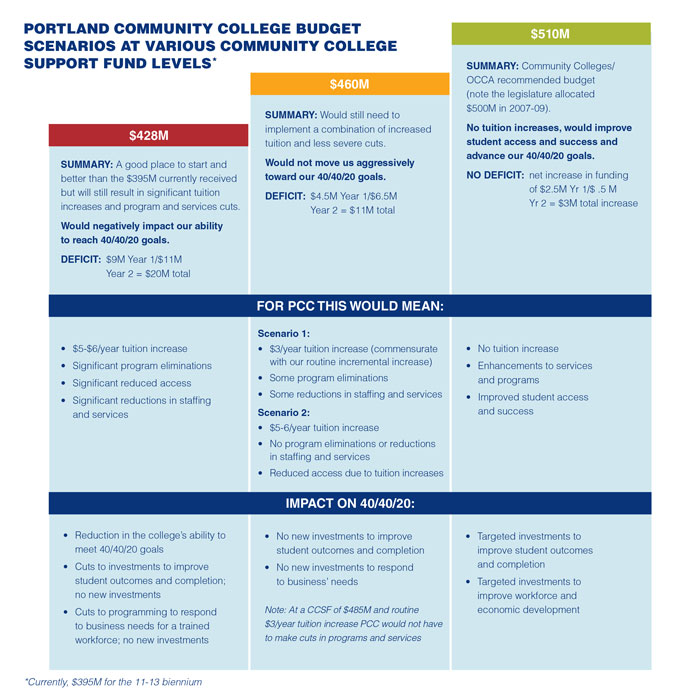This content was published: March 7, 2013. Phone numbers, email addresses, and other information may have changed.
PCC president outlines implications of state’s higher education budget to the college
Photos and story by Kate Chester
Since November of last year administrators at Portland Community College have been busy meeting with state legislators who represent different parts of the college’s district. The meetings pertained to the state’s investment in higher education.
Governor John Kitzhaber has put forth a budget that includes $428 million for PCC and the other 16 Oregon community colleges for the 2013-15 biennium. While there is appreciation for the positive direction of the budget, there is disappointment in the recent announcement by the co-chairs of the Ways and Means Committee that there are no additional increases in the budget for community colleges.
“The reality is that $428 million is not sufficient to meet the needs of our students,” said Preston Pulliams, PCC’s president. “To prevent cuts to services and classes for our students, we will continue to lobby for the $510 million investment level.”
Research indicates that communities that invest in higher education are more likely to have a prosperous economy, in part because those with higher education are more able to support themselves financially. The majority of family wage jobs require education beyond high school. Portland Community College provides that pathway for many students, with career technical training for such workforce jobs as nursing, machine manufacturing and welding. Additionally, the college also offers transfer programs that serve as the gateway to four-year universities for thousands of our students.
“For the past several years Oregon’s investment in higher education has dropped significantly,” said Pulliams. “As a way to make ends meet, PCC’s Board of Directors has approved a tuition increase for the 2013-14 academic year, from $82 to $88 per credit. But we can’t continue to do this; we’ll be pricing students out of higher education if we continue down this path – and without PCC, many of our students wouldn’t be able to attend college,” he said.
Higher tuition also could prove to be an impediment to meet the Governor’s 40-40-20 objective: that 40 percent of the state’s adults have four-year college degrees, 40 percent have two-year degrees, and the remaining 20 percent have high school diplomas by 2025.
To attain this goal, PCC must increase the number of its students who earn associate’s degrees and also the number that transfer from PCC to universities. That requires keeping tuition rates affordable and maintaining investments and initiatives that improve student outcomes and ensure a quality education.
Now is the time to remind legislators of the important role PCC plays in the state’s future and the negative impact a community college budget of $428M will have on students and the region. Portland Community College will continue to advocate for a $510M investment level in community colleges. Want to get involved in the issue? Contact your local legislator to share your view about increased state investment in higher education.
And for a bit more background on the topic, carve out a few minutes to read The Oregonian article that illustrates the state’s declining investment in colleges and universities; only four states in the country provide less taxpayer support per college student than Oregon.



[…] Interested in more information? Read the entire story. […]